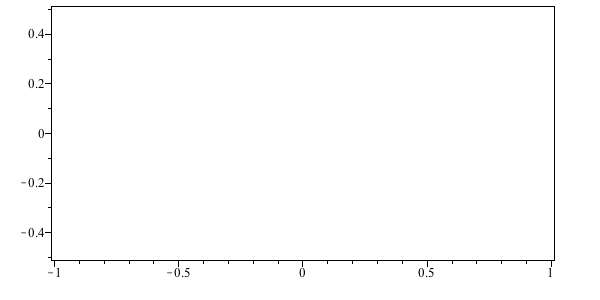Description
The problem of 'four bugs on a square' was made famous by Martin Gardner in 1957. Start with four bugs at the corners of a unit square, and let each bug chase the next with speed 1. It is not too hard to see that they will collide at the centre of that square after one unit of time:

However, if the bugs start off at the corners not of a square, but rather of a rectangle, then the problem becomes much more complicated. Here's the first part of the motion, when the bugs start at the vertices of a two-by-one rectangle:

It turns out that the bugs circle each other infinitely-many times before colliding, with the scales of the configurations shrinking by unimaginably-large factors on each circuit. The geometries become so extreme that numerical simulations break down - the full story requires a careful analytical treatment, matching solutions to the equations in different regimes.
Generalisations to different pursuit rules are also possible. For example, the bugs might be moving on a sphere, or on the hyperbolic plane. Another problem which you might analyse is related to the following observation, which is illustrated here: take a polygon with random vertices, find the mid-points of its sides, and use these to create a new polygon, replacing the original. Do this repeatedly and an ellipse will eventually form.
In this project you will explore this model and its various generalisations (different numbers of bugs, relativistic bugs, other pursuit problems... ). A key paper on the four-bug problem appeared as recently as 2011, so there's plenty of room for you to make your own discoveries.
Prerequisites
Some familiarity with ordinary differential equations will help, as will a willingness to make numerical explorations for yourself using a computer.
Resources
- Martin Gardner's article appeared in Scientific American 197 (1957), 140-146 (or try this link).
- The book Chases and escapes by Paul Nahin (Princeton University Press 2007) is a good general background on pursuit problems.
- Four bugs on a rectangle, S.J. Chapman. J. Lottes and L.N. Trefethen, Proc. Roy. Soc. A (2011) 467 881-896.
- A symmetrical pursuit problem on the sphere and the hyperbolic place, P.K. Aravind, The Mathematical Gazette (1994) 78 30-36.
- Three pages from Wolfram Mathworld on these sorts of problems are here, here and here.